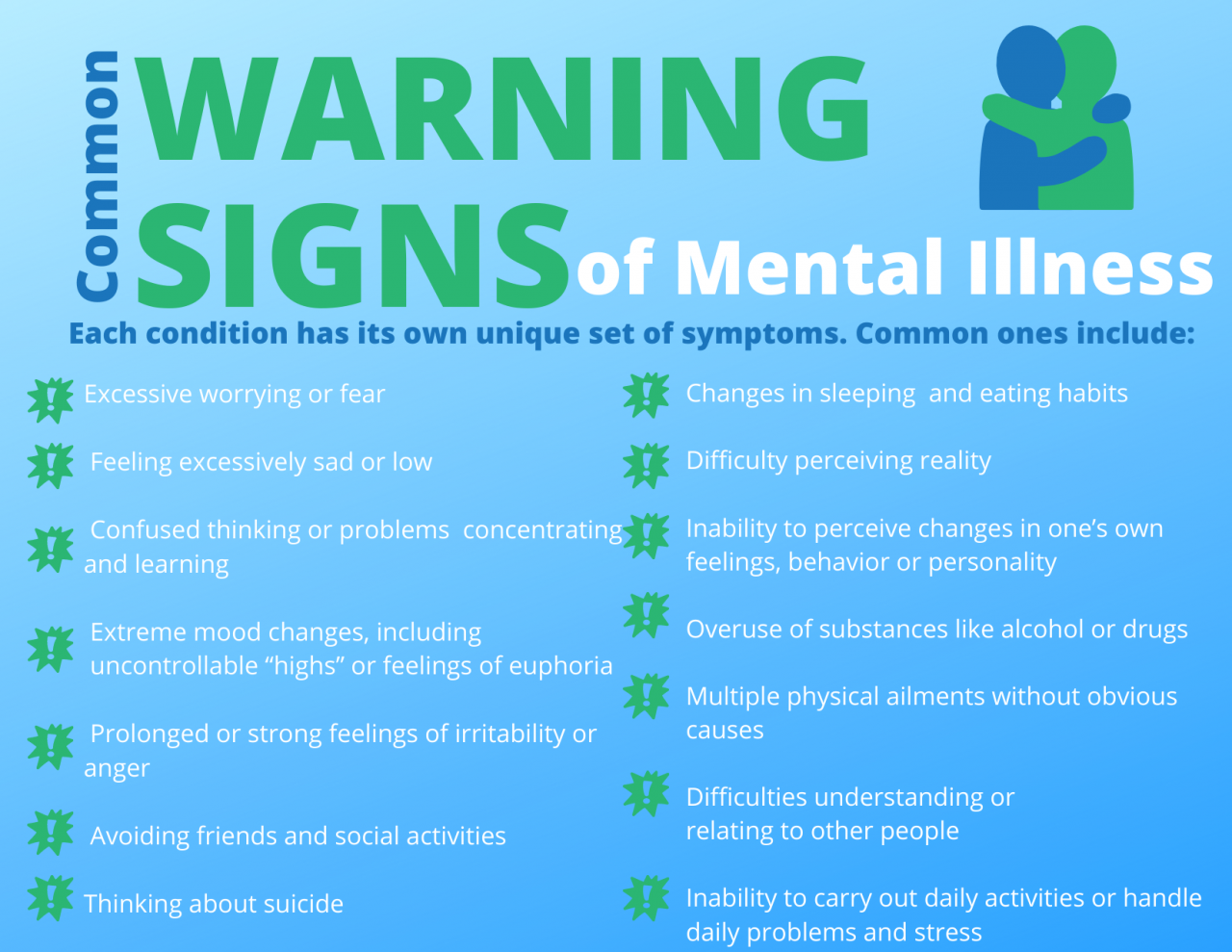What is Mental Health
Mental health includes our emotional, psychological, and social well-being. It affects how we think, feel, and act. It can also determine how we handle stress, respond to others, and our decisions. Everyone’s mental health is important at every life stage. Mental illnesses include many different conditions that vary in degree of severity, ranging from mild to moderate to severe.
Many factors contribute to mental health problems, including biological factors, life experiences, and/ or a family history of mental health problems.
Just like other serious illnesses, mental illness is not your fault, unfortunately, there is still widespread misunderstandings and stigma that remains around mental illness. Luckily, people with mental illness can often overcome the challenges of it and take on meaningful roles in their social life, school, and work. Through the development of a treatment plan, many symptoms can be reduced.
You are not alone
- 1 in 5 U.S. adults experience mental illness each year
- 1 in 20 U.S. adults experience serious mental illness each year
- 1 in 6 U.S. youth aged 6-17 experience a mental health disorder each year
- 50% of all lifetime mental illness begins by age 14, and 75% by age 24
Annual prevalence of mental illness among U.S. adults, by demographic group:
- Non-Hispanic Asian: 16.4%
- Non-Hispanic white: 23.9%
- Non-Hispanic black or African-American: 21.4%
- Non-Hispanic American Indian or Alaska Native: 26.61%
- Non-Hispanic mixed/multiracial: 34.9%
- Hispanic or Latino: 20.7%
- Lesbian, Gay or Bisexual: 50.2%
Annual prevalence among U.S. adults, by condition:
-
- Major Depressive Episode: 8.3% (23.8 million people)
- Schizophrenia: <1% (estimated 1.5 million people)
- Bipolar Disorder: 2.8% (estimated 7 million people)
- Anxiety Disorders: 19.1% (estimated 48 million people)
- Post Traumatic Stress Disorder: 3.6% (estimated 9 million people)
- Obsessive Compulsive Disorder: 1.2% estimated 3 million people)
- Borderline Personality Disorder: 1.4% (estimated 3.5 million people)

Ways to Maintain Positive Mental Health
- Getting professional help if you need it
- Connecting with others
- Staying positive
- Getting physically active
- Helping others
- Getting enough sleep
- Developing coping skills
Comorbidity
19.4 million U.S. adults with mental illness also experienced a substance use disorder in 2021.
- Comorbidity describes when co-occurring conditions appear in a person. The conditions can occur simultaneously or one right after the other.
- Comorbid substance use disorder and mental illnesses are common, about half of people who have one condition also have the other.
- But Substance use disorders and mental illnesses have many of the same risk factors. Additionally, having one may predispose someone to develop the other.
- Treatment for comorbid illnesses should focus on both illness and disorder together, rather than one or the other.
It’s Okay To Talk About Suicide
When someone you love is thinking about suicide it can be extremely emotional and scary. Suicide can be prevented and the conversations need to happen.
Validate the Person’s Experience:
- Talk openly
- Don’t panic
- Be willing to listen and allow emotional expression
- Recognize that the situation is serious
- Don’t pass judgment
- Reassure that help is available
- Don’t promise secrecy
- Don’t leave the person alone
Suicide Statistics
- Suicide is the 2nd leading cause of death among people aged 10-34 in the U.S.
- Suicide is the 10th leading cause of death in the U.S.
- The overall suicide rate in the U.S. has increased by 31% since 2001
- Lesbian, gay and bisexual youth are 4x more likely to attempt suicide than straight youth
- 75% of people who die by suicide are male
- Transgender adults are nearly 12x more likely to attempt suicide than the general population
- Annual prevalence of serious thoughts of suicide, by U.S. demographic group:
If you are thinking of harming yourself or others, or are having thoughts of suicide, don’t be afraid to speak openly and honestly if you need help. You are not alone and there is support available.
Sources: National Alliance on Mental Illness, Substance Abuse and Mental Health Services Administration, Center for Disease Control, MentalHealth.gov, National Institute of Health
Revised November 2021


